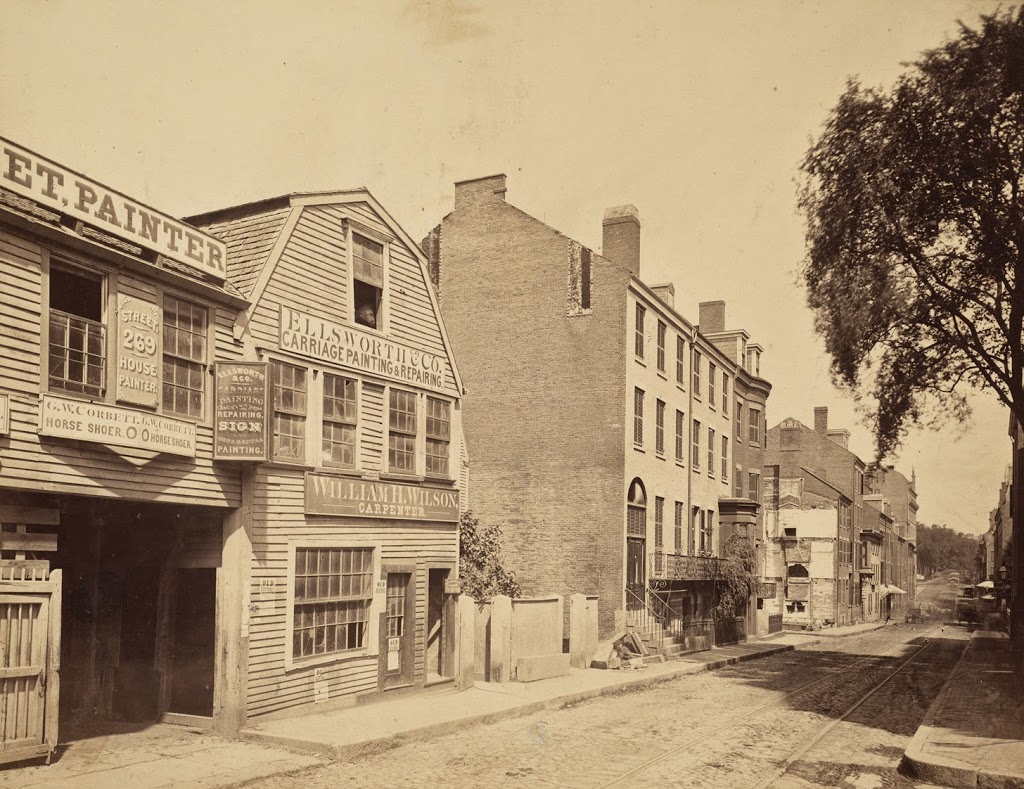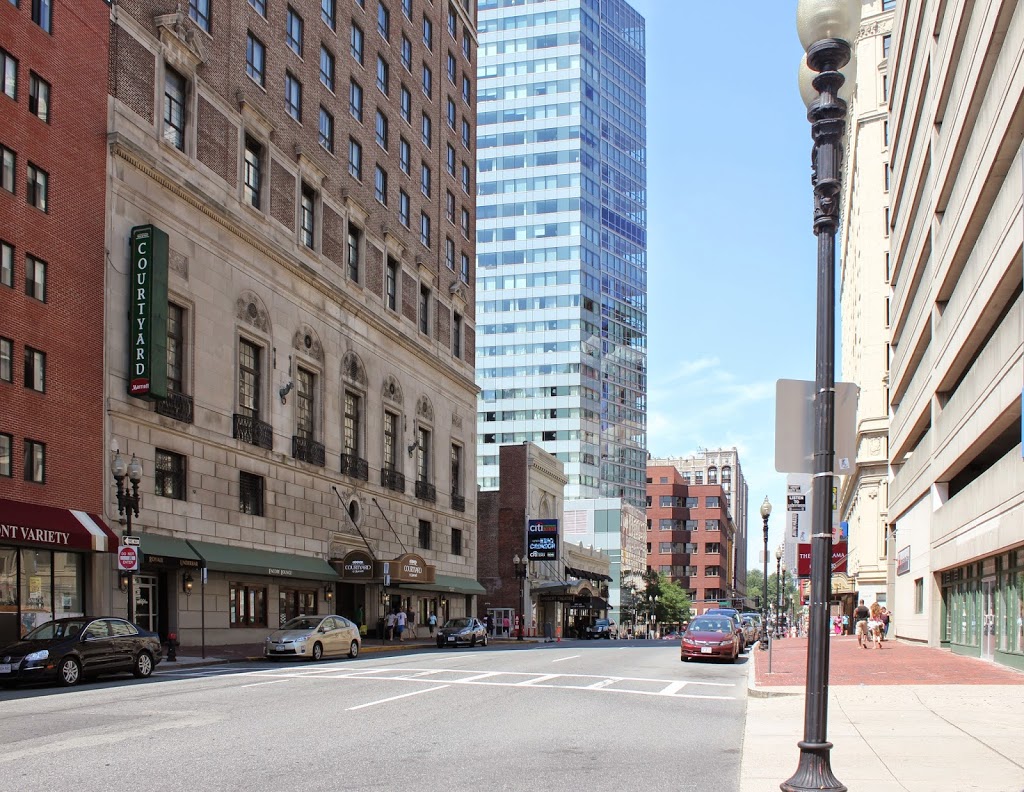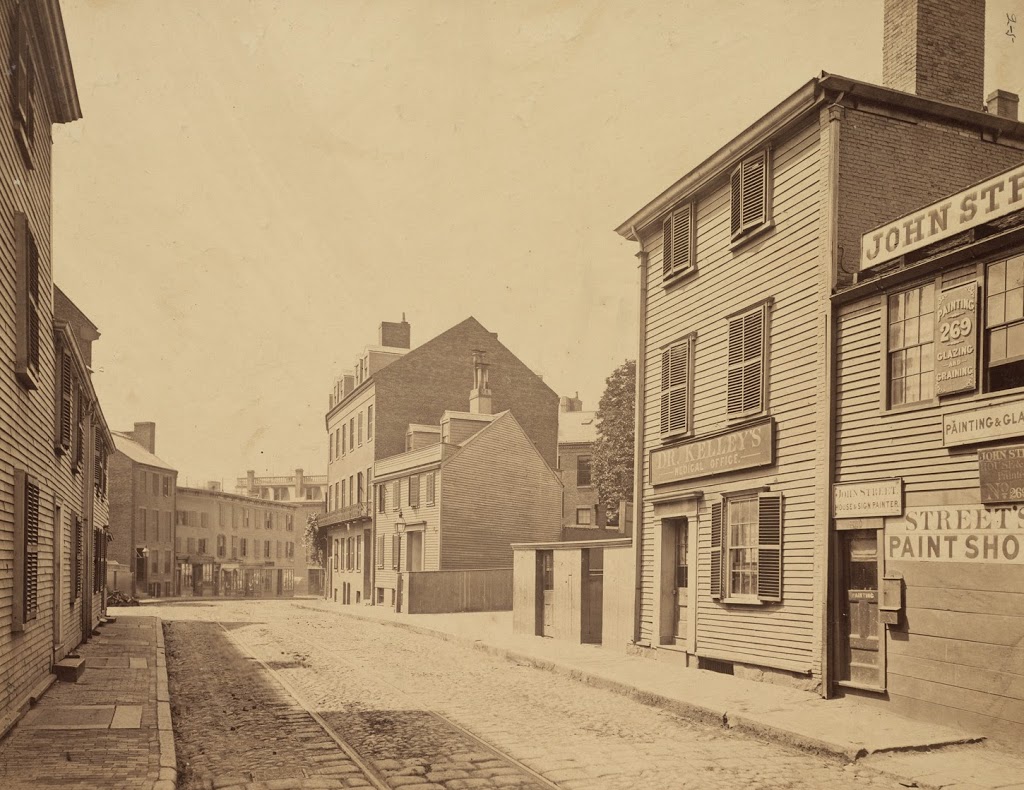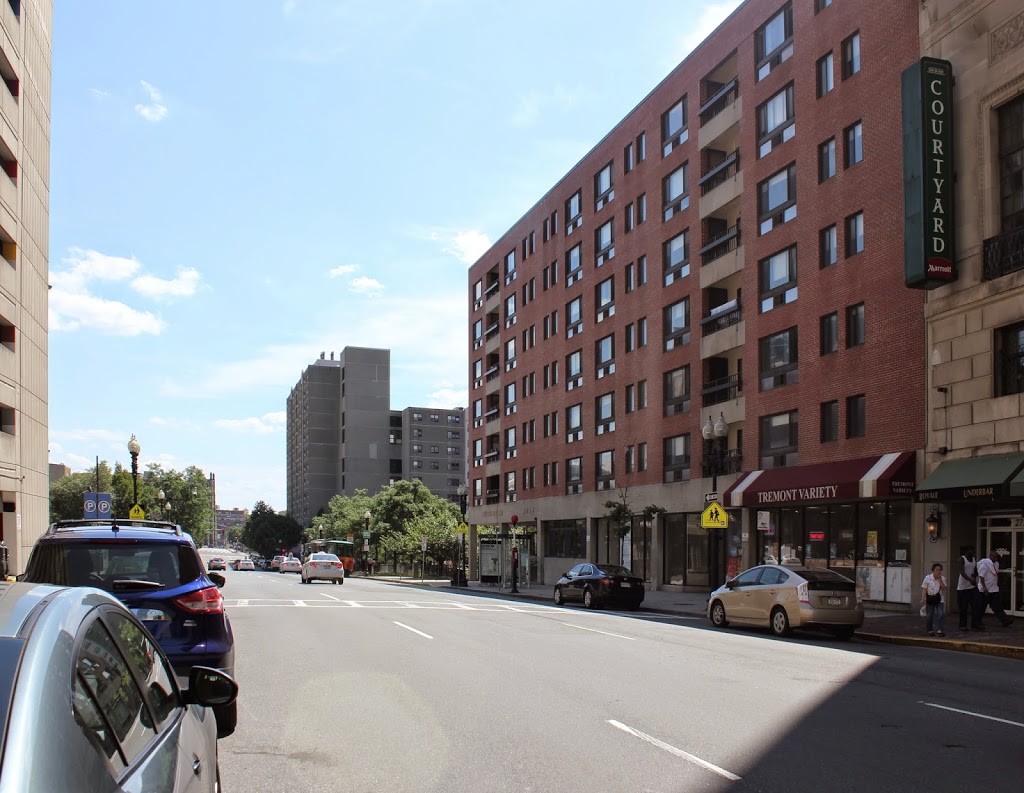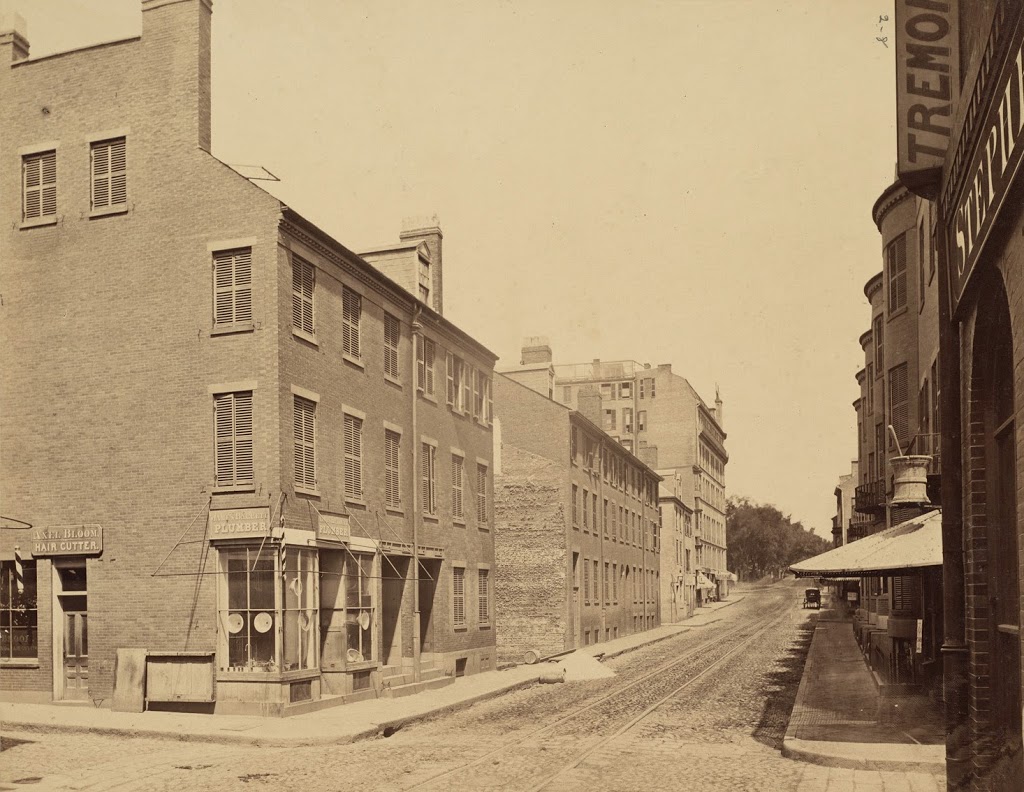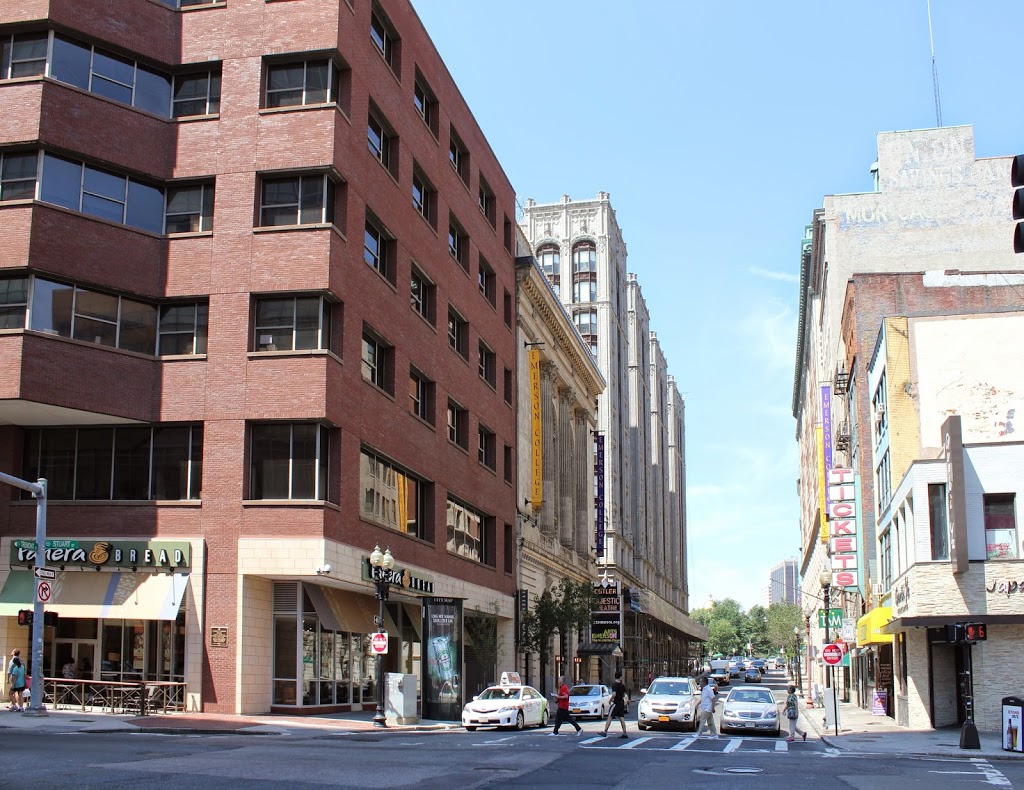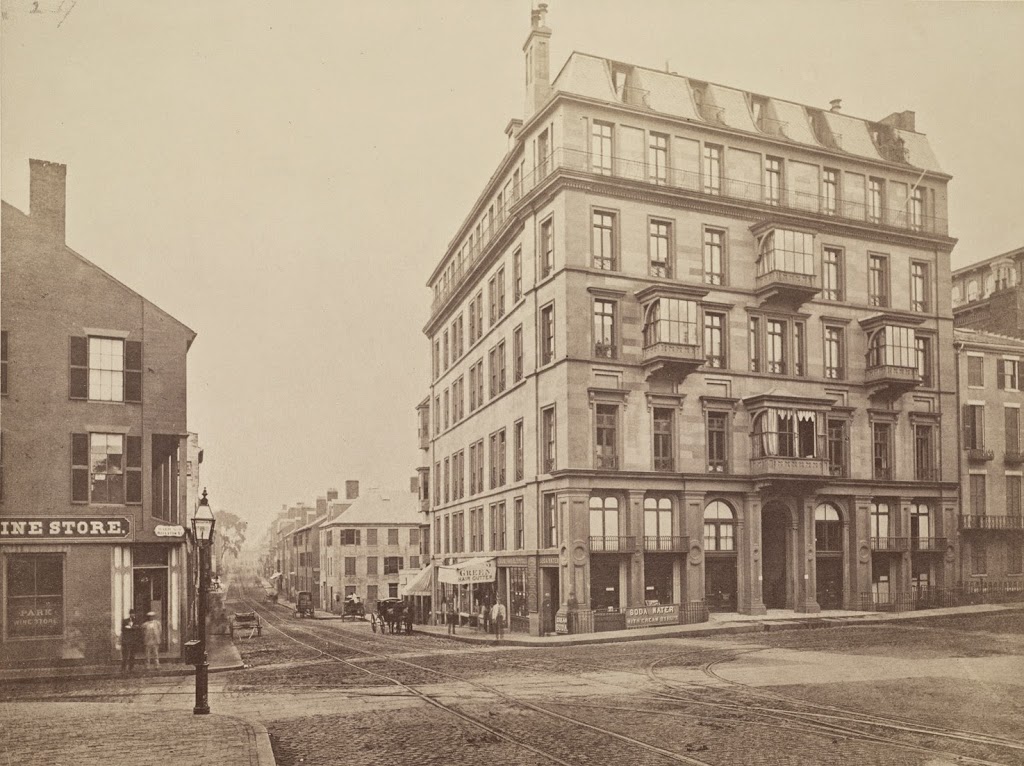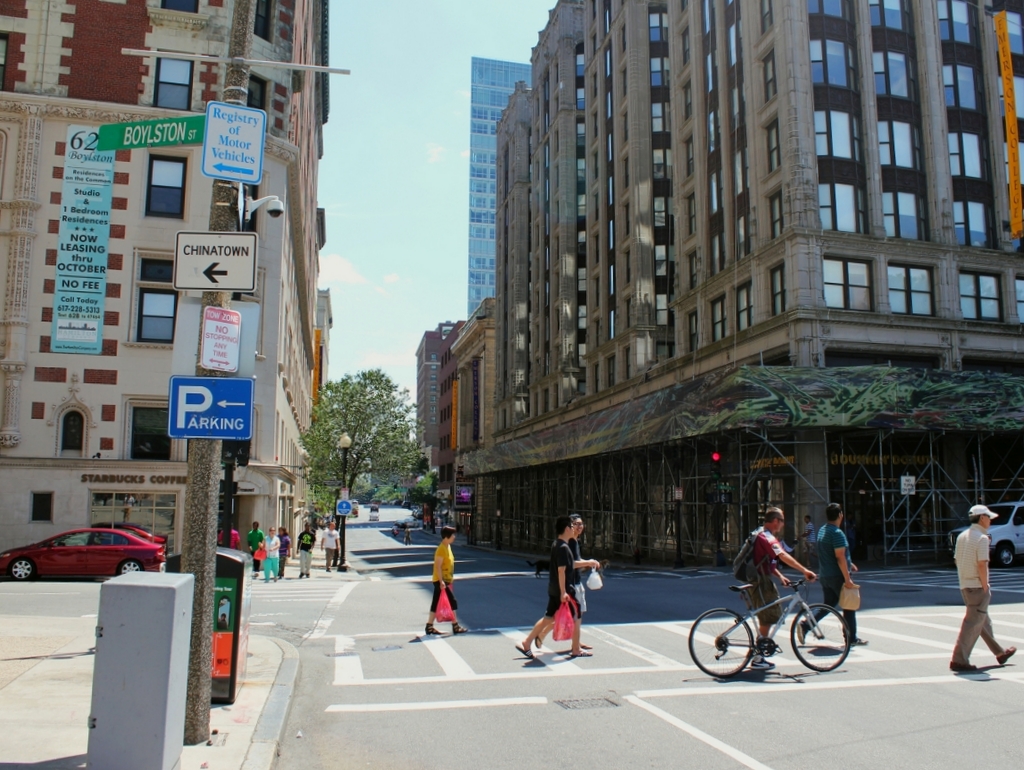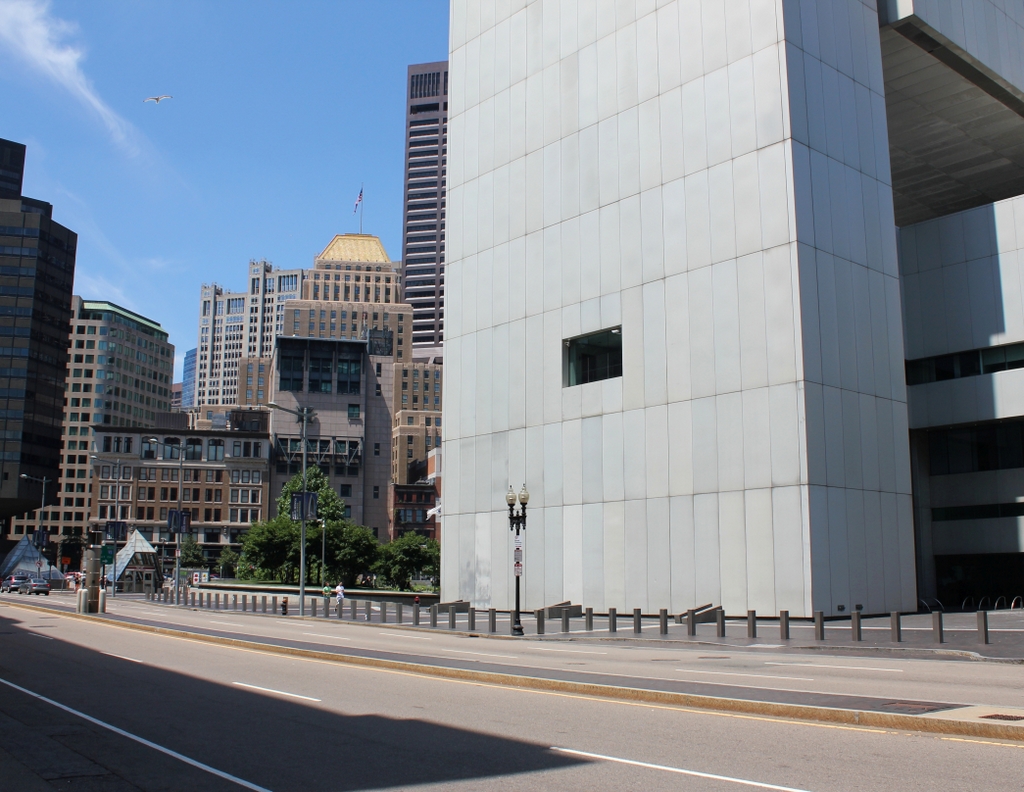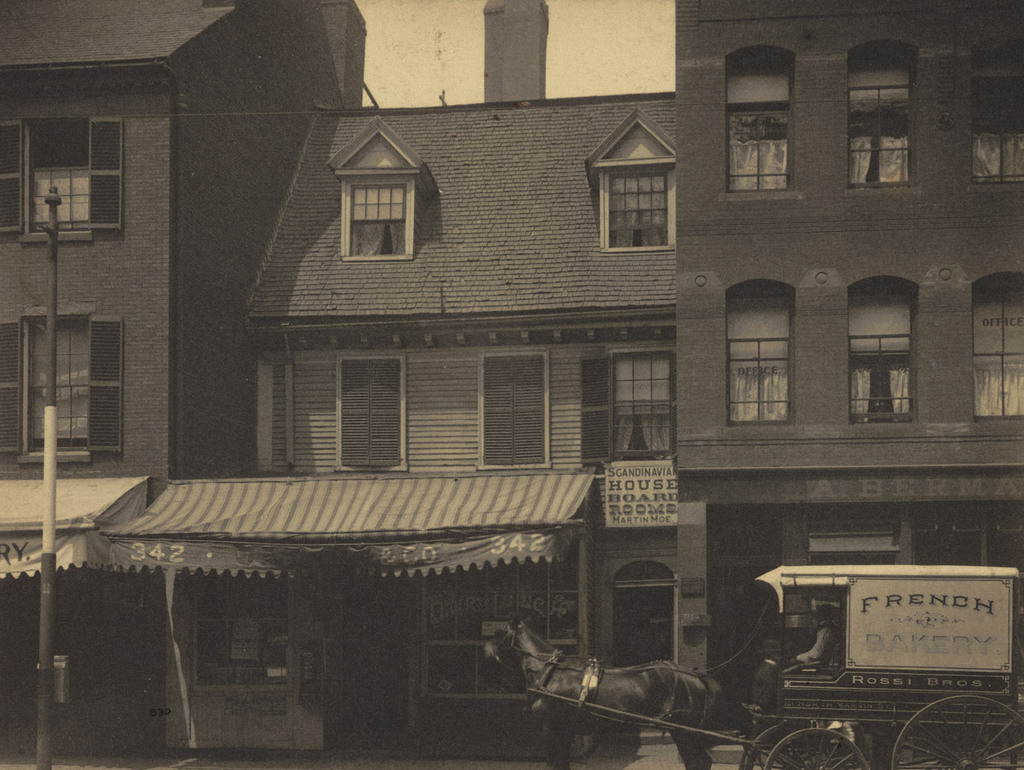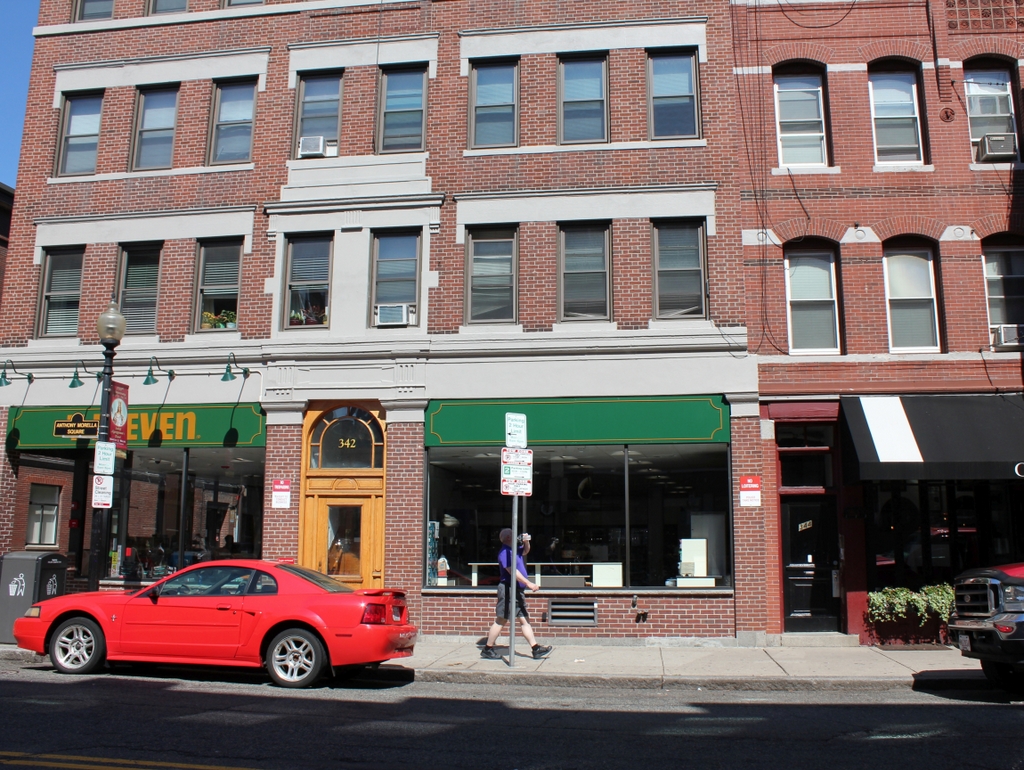Tremont Street in Boston, looking north toward Eliot Street (present-day Stuart Street) and Boston Common in the distance, in 1869. Photo courtesy of Boston Public Library.
The scene in 2014:
The first photo was taken from nearly the same location as the one in this post, just facing the opposite direction. All of the buildings in the first photo are gone, and most of them were probably demolished very soon after the first photo was taken, when Tremont Street was widened. Today, the narrow, cobblestone street is a distant memory, and Tremont Street is a major road that, in the 2014 photo, passes through Boston’s Theater District.

